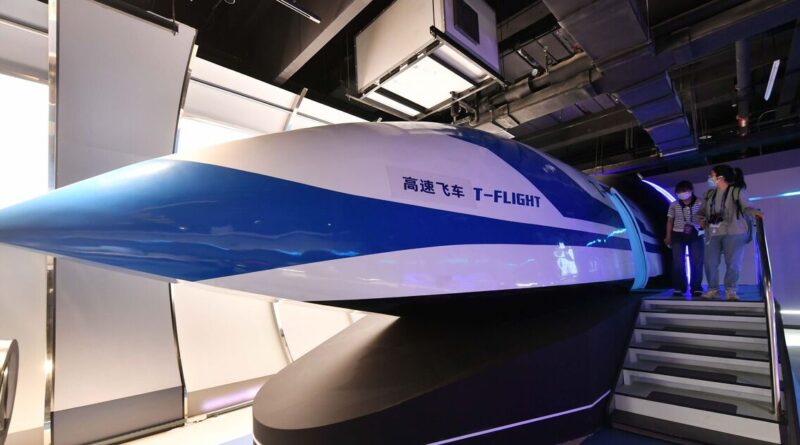World’s incredible 387mph high speed train that could eventually go faster than a plane | World | News
China’s ambitious T-Flight maglev train project aims to outpace planes as it hovers above rail tracks.
The train, developed by the China Aerospace Science and Industry Corporation (CASIC), uses magnetic levitation (maglev) technology to get rid of friction and allow faster, quieter travel.
In a test run carried out last year the train hit 387mph (623km/h) on a short track.
However, engineers hope to reach speeds of 1,243mph (2,000km/h), overtaking commercial planes like the Boeing 737.
While not yet operational, T-Flight could one day cut the journey between Wuhan and Beijing – a distance of 650 miles (1,055 km) – from four hours to just 30 minutes.
READ MORE: Boost to Brits as 50 new long-haul flight routes launched this month – full list
For comparison, current high-speed trains in China reach speeds of around 217mph (350km/h).
Japan’s Bullet Train travels at 275mph (443km/h), and the Eurostar tops out at 186mph (300km/h).
The goal is for T-Flight to completely change long-distance travel by using a vacuum-tube system.
The concept was first proposed in 1910 and later brought to attention by Elon Musk‘s Hyperloop idea.
The reduced atmospheric pressure in the tubes lowers air resistance, giving the train the ability to reach higher speeds.
While maglev trains like Japan’s L0 Series already reach 374mph (602km/h), the T-Flight is expected to exceed that significantly.
China’s existing high-speed rail system includes the Shanghai Maglev, which travels at 267mph (431km/h), but the T-Flight’s technology could outperform even this.
The long-term aim is for T-Flight to connect major cities, cutting travel time drastically.
CASIC is preparing for its next round of tests on a much longer track, with the train targeting speeds that could outpace commercial jets.
While still in the testing phase, the T-Flight could potentially change long-distance travel across the globe.
However, there are still many cost, safety and technological concerns that need to be addressed before the system becomes commercially viable.





